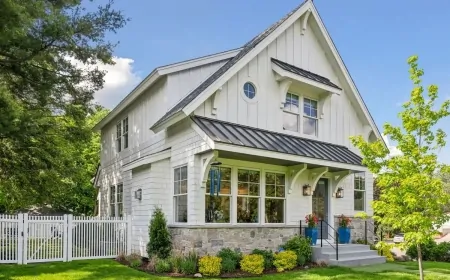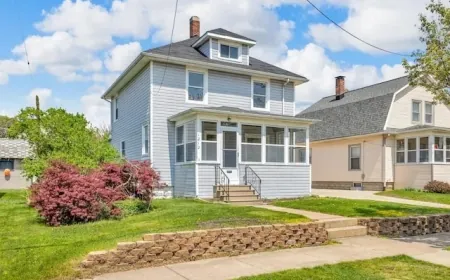US Mortgage Refinancing Skyrockets as Lower Rates Meet Rising Home Prices
US mortgage refinancing jumps due to falling rates, but rising home prices make it harder for buyers to afford homes. Learn more about the latest trends.

US mortgage refinancing activity surged last week, driven by a decline in borrowing costs. This surge marks the largest increase in refinancing since the early days of the COVID-19 pandemic, as homeowners seize the opportunity to secure better loan terms.
The Mortgage Bankers Association (MBA) reported a 34.5% increase in its refinancing index, which reached 889.3—the highest level in over two years. This uptick occurred alongside a 2.8% rise in mortgage applications for home purchases during the week ending August 9, the largest weekly increase since early June.
The MBA's data, released on Wednesday, showed that the average interest rate on a 30-year fixed mortgage dropped by 1 basis point to 6.54%. Meanwhile, the rate for a 15-year fixed mortgage fell by 7 basis points to 5.96%, marking the lowest level since May of the previous year. Notably, the 15-year fixed mortgage rate is now 8 basis points lower than the rate for a five-year adjustable-rate mortgage, the widest gap seen since January 2022.
Impact of Lower Interest Rates on Mortgage Refinancing
The overall index of mortgage applications, which includes both refinancing and purchase activities, surged by 16.8% last week—the largest increase since January of last year. This rise reflects a growing trend among homeowners and prospective buyers to take advantage of the declining interest rates.
Mortgage rates are closely linked to US government securities, and the yield on the 10-year Treasury note, after briefly dipping, has started to recover. Investors have adjusted their expectations regarding the Federal Reserve's future interest rate decisions, with many anticipating a reduction in borrowing costs during the September meeting. However, the outlook remains uncertain as the central bank continues to navigate economic challenges.
Challenges in the Housing Market Amid Rising Prices
Despite the favorable mortgage rates, rising home prices are creating significant challenges for potential homebuyers. Data released by the National Association of Realtors (NAR) on Tuesday indicated that home prices rose by 4.9% in the second quarter compared to the same period last year. This ongoing increase in home prices is making it increasingly difficult for buyers, particularly first-time buyers, to afford a home.
The NAR's findings also revealed that in nearly 48% of US markets, an income of at least $100,000 is now required to afford a mortgage with a 10% down payment. This marks a significant increase from the first quarter, where 40.7% of the nation’s real estate markets required such income levels. The affordability crisis is particularly severe in major metropolitan areas, where housing demand continues to outstrip supply, driving prices even higher.
Long-Term Effects of Mortgage Rate Trends on the Housing Market
The current surge in mortgage refinancing and applications could have broader implications for the US housing market. While lower interest rates provide some relief for existing homeowners, the persistent rise in home prices may exacerbate disparities in homeownership rates, particularly among middle- and lower-income households. This trend is especially concerning in regions where housing costs are already high, as it could further limit access to affordable housing.
Additionally, the growing gap between fixed-rate and adjustable-rate mortgages may influence borrowing decisions. Homebuyers may increasingly opt for fixed-rate mortgages to lock in lower rates for the long term, potentially leading to changes in lending practices and mortgage offerings.
The MBA’s weekly survey, which has been conducted since 1990, gathers data from mortgage bankers, commercial banks, and thrifts, covering more than 75% of all retail residential mortgage applications in the United States. This comprehensive data offers valuable insights into the trends shaping the housing market and the broader economy, making it a crucial resource for industry stakeholders and policymakers.
Also Read: More Than 100 U.S. Cities See Starter Homes Surpass $1 Million as Housing Market Struggles
































































